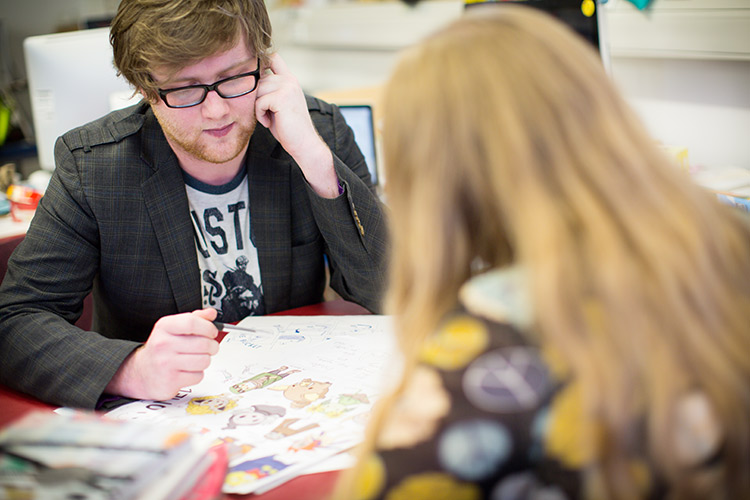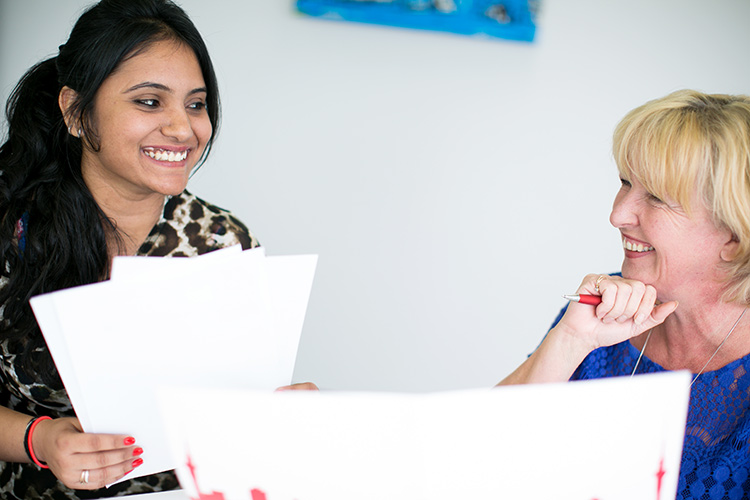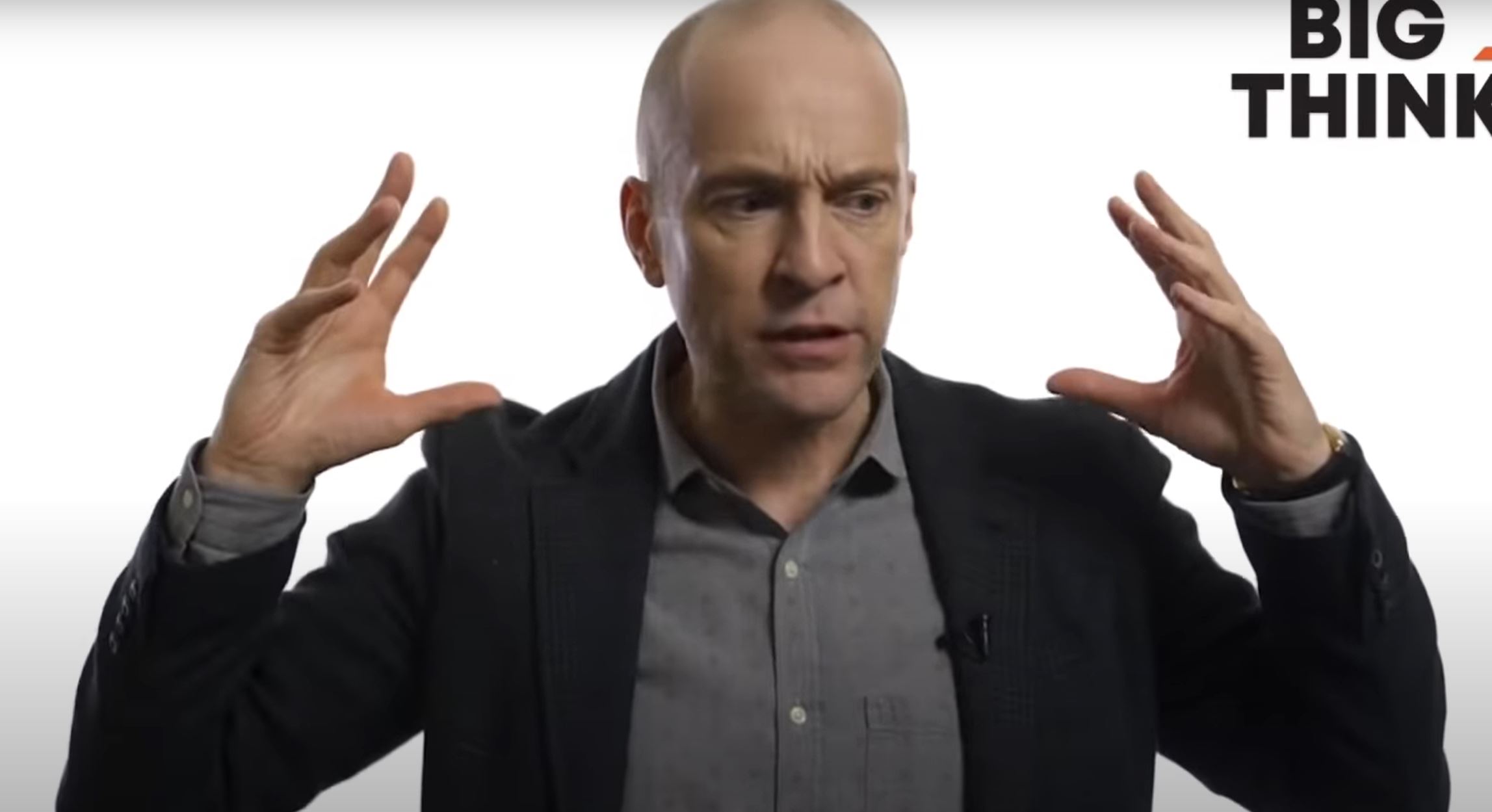Memory techniques
Good study skills involve more than being able to recite your notes verbatim. These memory techniques will help you retain and build on your knowledge.
Effective studying strategies
In general, the most effective study strategies are:
- Practice testing - cementing knowledge by self testing in various ways
- Distributed practice - spreading learning over many sessions
In general, the least effective are:
- Highlighting
- Re-reading
Did you know?
|
Only 11% of learners use practice testing - an effective study strategy |
|
And 84% of learners use re-reading - an ineffective study strategy |
What can I do?
There are many strategies that you can use to help your learning. For example:
-
Create your own practice problems or questions (for example: creating and using study cards).
-
Teach others by explaining a concept in your own words or using different mediums (drawing, reproducing, etc.)
-
Chunk your learning up into small sections and revisit them over several days. Review the last section before you start the next.
For more strategies and ideas check out the Train your brain and Memory techniques sections below.

Train your brain
Strengthening the connections between concepts and ideas results in better learning. The following memory techniques will help you train your brain to do this.
Memory techniques
Avoid the familiarity trap by noting key terms and concepts, self-testing, and applying what you know to solve practice problems.
> Test yourself on key concepts/practice problems. Testing encourages deep, elaborative processing. This is because every time you retrieve something from memory, you’re essentially re-learning it. The act of testing itself creates different pathways for retrieval, and the more paths to the knowledge you create, the likelier it is that you’ll find a way there when you need it.
> Wait a day or so after a study session to test yourself. Recent research showed subjects who read a passage and were immediately tested on it retained about 50% of the passage a week later. A control group who simply re-read several times, or crammed for the test, retained basically nothing (Karpicke and Blunt, 2011).
> Consider real world applications. Use what you are learning when tackling real world events or problems, or consider real-world applications of what you’re learning. Reflect on how the skills and knowledge you are building can be used beyond university. This creates more pathways in your brain, and can help keep you motivated.
Practice, predict and check understanding. We can learn to more accurately predict whether or not we really understand a concept and its application by practicing noting down concepts, predicting (after a study session) how well we know each concept on a scale of 1-5, then explaining them to others and comparing the quality of our explanation to our predictions.
> Monitor your learning. Self-monitoring your learning includes evaluating, planning and reflecting on your learning strategies and approaches. This is an important part of self-directed learning. Reflecting on what you’ve done helps you see the value of certain strategies, that leverage your strengths and bolster your weaknesses. It also increases your sense of control over outcomes.
> Seek specific and meaningful feedback. Ask for feedback from teachers, learning advisors and peers to adjust your learning and studying techniques. This can help you avoid studying/working very hard without results.
> If you’re confused, you’re probably learning. Students who reported being confused on some complex test questions actually scored significantly better on an exam than students who were not confused. Could it be that confusion activated the motivation to figure it out?
> Space your study sessions. Recall improves when studying is spread out over time. Start studying early and keep studying as you go along. Utilise your time-management skills and tools. By spreading out your studying, you can avoid mental exhaustion and having to cram before exams. So, try practice testing after you have read material, and take study breaks to let yourself to relax, mentally and physically.
> Chunking. Chunking is great for when you’ve read something over and over, but it isn’t sinking in. It’s an effective way to simplify things, and make the information you’re taking in more meaningful, by allowing it time to sink in. Break the concept you’re struggling with into smaller pieces, and sort those pieces by theme. Focus on memorising or understanding these chunks; they’ll be much easier to ‘digest’. Test yourself 5-15 minutes later. Mind maps and visual notetaking can help with chunking.
> Set priorities. Set realistic goals and prioritize your studying by surveying your syllabus, reviewing material, and identifying the most important topics covered in the class, or areas you’re struggling with.
> Create association maps. Mind maps and concept maps can lead to meaningful learning, as they force you to re-organize and make sense of the information. Redo your notes as a diagram or as a concept map.
> Make connections. What you’re learning (hopefully!) applies to the real world. Make connections between course concepts, different programmes, and real-world situations. If you’re having trouble understanding something, ask yourself how these concepts apply to your life.
> Ask questions to reduce bias. Check your thinking by asking questions about what you’re learning. What’s being said? Who is saying it? Why are they saying it? Who else says this? What do I believe? Why do I believe it? What’s missing? Asking good questions helps us solve problems, make thoughtful decisions and think creatively.
Memory techniques
Explore the methods below until you discover the memory techniques that best suit your learning style. Depending upon the topic, you may find that it is easier to use some strategies than others, so experiment with a variety of techniques.
1. Study cards
Sets of multi-coloured study cards are available for $1 per set of 60 cards from Student Success Reception.
Cards can be used in a variety of ways:
-
Write a question/term on one side and the answer/definition on the other
-
Draw a diagram leaving blanks for the labels and provide answers on the flip side
-
Make summaries of your summaries
-
Draw mini-mindmaps
-
List key words - using a different colour card for each topic
2. Mnemonics
A mnemonic uses the first letter of words, or the first word of sentences as a technique to help you to remember information. Select and rearrange information to make a story/rhyme/sentence/word. A good mnemonic uses humour, overstatements, and connotations. Mnemonics are also useful for summarising material in mindmaps and on study cards. A science student made up the following mnemonic:
List of terms to be learned:
Antigens, Pathogens, Toxins, Vaccines, Toxoids
Mnemonic:
Aunty Pat Took Val’s Temperature
Acronym:
TAP TV

Practise asking and answering questions or explain a topic to someone else.
3. Mind maps
A mind map is a method for visually organising information using a combination of words, symbols, patterns, colours and shapes. Mind maps are useful for planning essay and assignment assignment material, note taking in lectures and summarising study notes. Mind maps need to be reviewed and developed as your knowledge increases. Attach mind maps to the fridge, doors, walls, ceiling and other places where you can see them regularly.
4. Teacher role
To help clarify your thinking, explain a topic to someone else. If you can’t find anyone who wants to listen, try reciting material aloud to yourself.
5. Question and answer
In pairs or individually, practise asking and answering questions, perhaps using flip cards. You could also make a tape of questions related to a particular topic, leaving a pause so you can supply an answer.
6. Method of loci
The loci method involves adding new material to information that you are already familiar with. It is particularly effective if you want to learn a sequence of material.
One method is to imagine a familiar walk and a number of landmarks along that walk. At each landmark you visualise an exaggerated image related to the information you need to recall. Visual images of the information you wish to learn could also be linked to parts of the body, the rooms in your house, numbers etc.
References
Attribution
Hero image: Close up of painting by Fiona Art. Licensed under a Pexels.com license.




